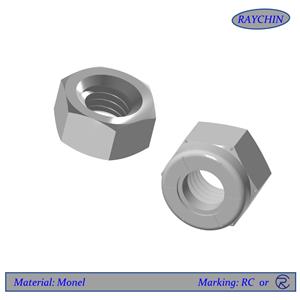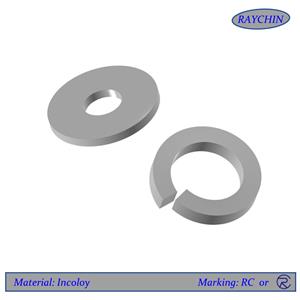Special metal fasteners - Monel fasteners
Monel Fasteners - Bolts, Nuts, Screws
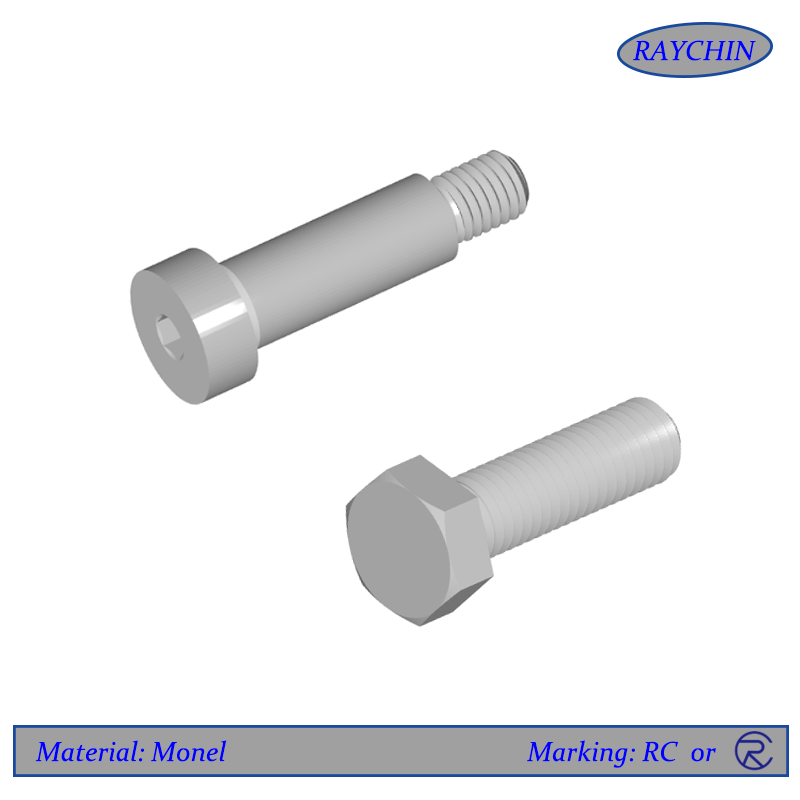
Monel is a group of nickel alloys, primarily composed of nickel (from 52 to 67%) and copper, with small amounts of iron, manganese, carbon, and silicon. Alloys with copper contents 60% or more are called cupronickel.
Stronger than pure nickel, Monel alloys are resistant to corrosion by many aggressive agents, including rapidly flowing seawater. They can be fabricated readily by hot- and cold-working, machining, and welding.
As an expensive alloy, its use is limited to those applications where it cannot be replaced with cheaper alternatives.
Properties:
Monel is a solid-solution binary alloy. As nickel and copper are mutually soluble in all proportions, it is a single-phase alloy. Compared to steel, Monel is very difficult to machine as it work-hardens very quickly. It needs to be turned and worked at slow speeds and low feed rates. It is resistant to corrosion and acids, and some alloys can withstand a fire in pure oxygen. It is commonly used in applications with highly corrosive conditions. Small additions of aluminium and titanium form an alloy (K-500) with the same corrosion resistance but with much greater strength due to gamma prime formation on aging. Monel is typically much more expensive than stainless steel.
Monel alloy 400 has a specific gravity of 8.80, a melting range of 1300–1350 °C, an electrical conductivity of approximately 34% IACS, and (in the annealed state) a hardness of 65 Rockwell B. Monel alloy 400 is notable for its toughness, which is maintained over a considerable range of temperatures.
Monel alloy 400 has excellent mechanical properties at subzero temperatures. Strength and hardness increase with only slight impairment of ductility or impact resistance. The alloy does not undergo a ductile-to-brittle transition even when cooled to the temperature of liquid hydrogen. This is in marked contrast to many ferrous materials which are brittle at low temperatures despite their increased strength.
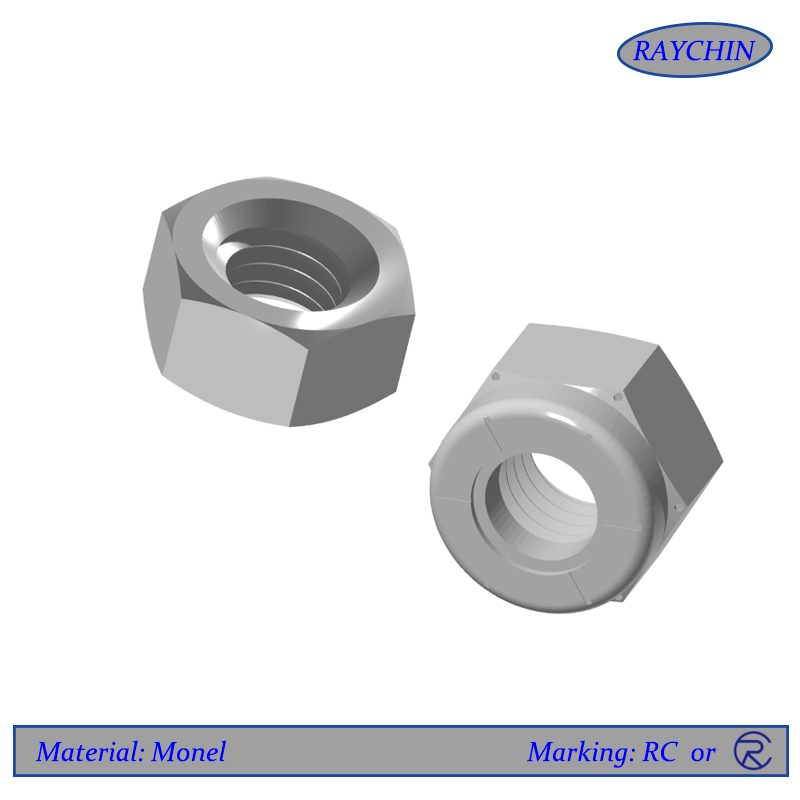
Uses:
Aerospace applications:
In the 1960s, Monel metal found bulk uses in aircraft construction, especially in making the frames and skins of experimental rocket planes, such as the North American X-15, to resist the great heat generated by aerodynamic friction during extremely high speed flight. Monel metal retains its strength at very high temperatures, allowing it to maintain its shape at high atmospheric flight speeds, a trade off against the increased weight of the parts due to Monel's high density.
Monel is used for safety wiring in aircraft maintenance to ensure that fasteners cannot come undone, usually in high-temperature areas; stainless wire is used in other areas for economy.
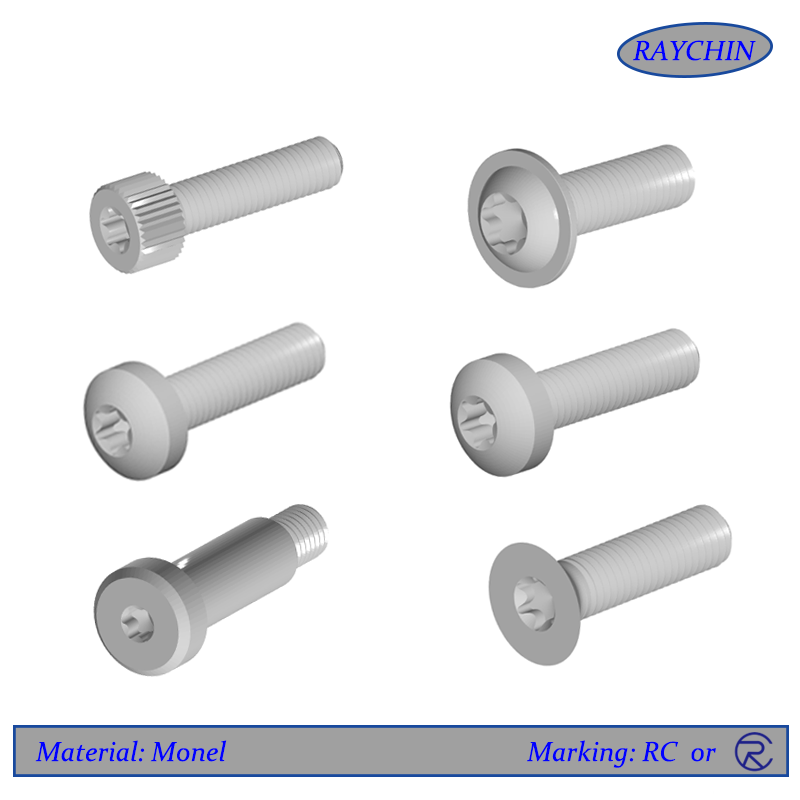
Oil production and refining:
Monel is used in the section of Alkylation units in direct contact with concentrated hydrofluoric acid. Monel offers exceptional resistance to hydrofluoric acid in all concentrations up to the boiling point. It is perhaps the most resistant of all commonly used engineering alloys. The alloy is also resistant to many forms of sulfuric and hydrochloric acids under reducing conditions.
Marine applications:
Monel's corrosion resistance makes it ideal in applications such as piping systems, pump shafts, seawater valves, trolling wire, and strainer baskets. Some alloys are completely non-magnetic and are used for anchor cable aboard minesweepers, housings for magnetic-field measurement equipment. In recreational boating, Monel is used for wire to seize shackles for anchor ropes, for water and fuel tanks, and for underwater applications. It is also used for propeller shafts and for keel bolts. On the popular Hobiecat sailboats, Monel rivets are used where strength is needed but stainless steel cannot be used due to corrosion that would result from stainless steel being in contact with the aluminum mast, boom, and frame of the boat in a saltwater environment.
Because of the problem of electrolytic action in salt water (also known as Galvanic corrosion), in shipbuilding Monel must be carefully insulated from other metals such as steel.
Musical instruments:
Monel is used as the material for valve pistons or rotors in some higher quality musical instruments such as trumpets, tubas and French horns.
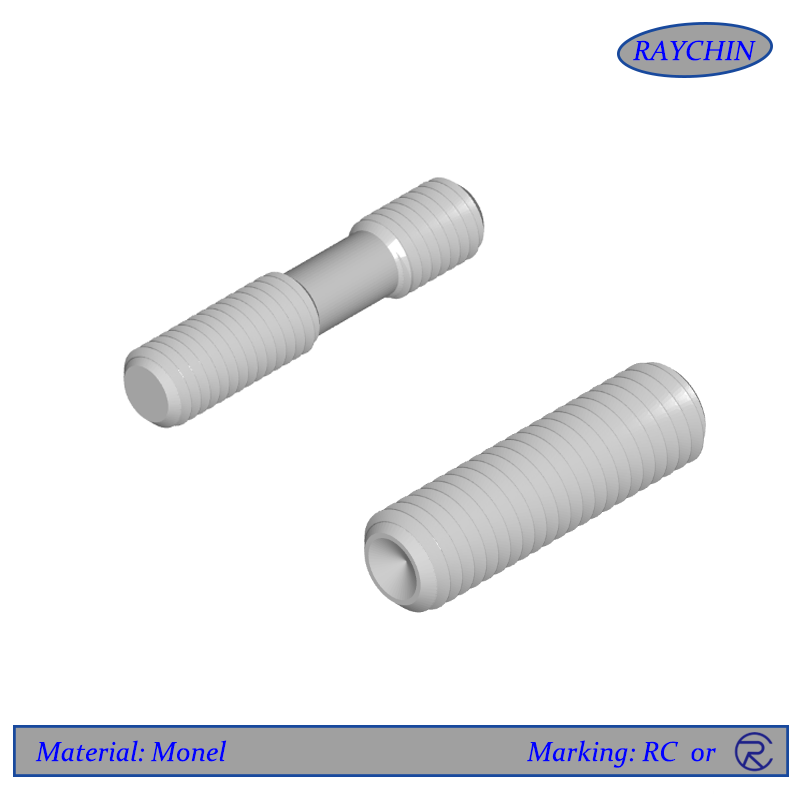
Alloys:
| Trade Name | ASTM/AISI Alloy type | UNS | %Cu | %Al | %Ti | %Fe | %Mn | %Si | %Ni |
|---|---|---|---|---|---|---|---|---|---|
| Monel 400 | B 127, B 164 | N04400 | 28–34 | 2.5 max | 2.0 max | 0.5 max | 63 min | ||
| Monel 401 | N04401 | 28–34 | 2.5 max | 2.0 max | 63 min | ||||
| Monel 404 | N04404 | Rem | 0.05 max | 0.5 max | 0.1 max | 0.1 max | 52–57 | ||
| Monel K-500 | B 865 | N05500 | 27–33 | 2.3–3.15 | 0.35–0.85 | 2.0 max | 1.5 max | 0.5 max | 63 min |
| Monel 405 | B 164 | N04405 | 28–34 | 2.5 max | 2.0 max | 0.5 max | 63 min |
Monel 400
Monel 400 shows high strength and excellent corrosion resistance in a range of acidic and alkaline environments and is especially suitable for reducing conditions. It also has good ductility and thermal conductivity. Monel 400 typically finds application in marine engineering, chemical and hydrocarbon processing, heat exchangers, valves, and pumps. It is covered by the following standards: BS 3075, 3076 NA 13, DTD 204B and ASTM B164.
Large use of Monel 400 is made in alkylation units, namely in the reacting section in contact with concentrated hydrofluoric acid.
Monel 401
This alloy is designed for use in specialized electric and electronic applications. Alloy 401 is readily autogenously welded by the gas-tungsten-arc process. Resistance welding is a very satisfactory method for joining the material. It also exhibits good brazing characteristics. It is covered by standard UNS N04401.
Monel 404
Monel 404 alloy is used primarily in specialized electrical and electronic applications. The composition of Monel 404 is carefully adjusted to provide a very low Curie temperature, low permeability, and good brazing characteristics.
Monel 404 can be welded using common welding techniques and forged but cannot be hot worked. Cold working may be done using standard tooling and soft die materials for better finish. It is covered by standards UNS N04404 and ASTM F96. Monel 404 is used in capsules for transistors and ceramic to metal seals.
Monel 405
Monel 405 is the free-machining grade of alloy 400. The nickel, carbon, manganese, iron, silicon & copper percent remains the same as alloy 400, but the sulfur is changed from 0.024 max to 0.025-0.060%. Alloy 405 is used chiefly for automatic screw machine stock and is not generally recommended for other applications. The nickel-copper sulfides resulting from the sulfur in its composition act as chip breakers, but because of these inclusions the surface finish of the alloy is not as smooth as that of alloy 400. Monel 405 is designated UNS N04405 and is covered by ASME SB-164, ASTM B-164, Federal QQ-N-281, SAE AMS 4674 & 7234, Military MIL-N-894 & NACE MR-01-75.
Monel 450
This alloy exhibits good fatigue strength and has relatively high thermal conductivity. It is used for seawater condensers, condenser plates, distiller tubes, evaporator and heat exchanger tubes, and saltwater piping.
Monel K-500
Monel K-500 combines the excellent corrosion resistance characteristic of Monel alloy 400 with the added advantages of greater strength and hardness.[28][29] The increased properties are obtained by adding aluminum and titanium to the nickel-copper base, and by heating under controlled conditions so that submicroscopic particles of Ni3 (Ti, Al) are precipitated throughout the matrix.
The corrosion resistance of Monel alloy K-500 is substantially equivalent to that of alloy 400 except that, when in the age-hardened condition, alloy K-500 has a greater tendency toward stress-corrosion cracking in some environments. Monel alloy K-500 has been found to be resistant to a sour-gas environment. The combination of very low corrosion rates in high-velocity sea water and high strength make alloy K-500 particularly suitable for shafts of centrifugal pumps in marine service. In stagnant or slow-moving sea water, fouling may occur followed by pitting, but this pitting slows down after a fairly rapid initial attack.
Typical applications for alloy K-500 are pump shafts and impellers, doctor blades and scrapers, and oil-well drill collars, instruments, and electronic components.
Monel R-405
Monel R-405 is the free machining version of Monel 400. It is a nickel-copper alloy with a controlled amount of sulfur added to provide sulfide inclusions that act as chip breakers during machining. Like Monel 400, alloy R-405 is resistant to sea water and steam at high temperatures as well as to salt and caustic solutions. Monel R-405 is a solid solution alloy that can only be hardened by cold working. This nickel alloy exhibits characteristics like good corrosion-resistance, good weldability and high strength. A low corrosion rate in rapidly flowing brackish or seawater combined with excellent resistance to stress corrosion cracking in most freshwaters combined to its resistance to a variety of corrosive conditions justifies its wide use in marine applications and other non-oxidizing chloride solutions. This nickel-copper alloy is particularly resistant to hydrochloric and hydrofluoric acids when they are de-aerated. As would be expected from its high copper content, alloy R-405 is rapidly attacked by nitric acid and ammonia systems.
Alloy R-405 is chiefly used for automatic-screw-machine stock and is not generally recommended for other applications.
Monel 502
Monel 502 is a nickel-copper alloy and its UNS no is N05502. This grade also has good creep and oxidation resistance. Monel 502 can be formed in different shapes. Monel 502 can be machined similar to austenitic stainless steels.


